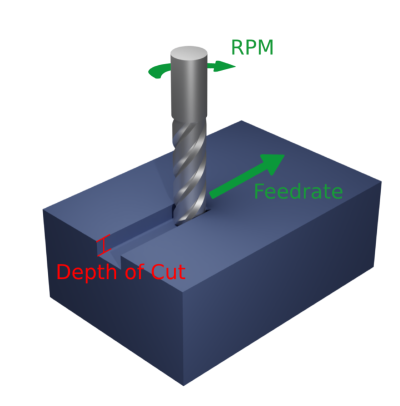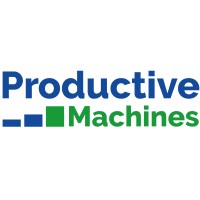
A smart cloud-based application designed to enhance machining strategies by offering cutting forces predictions and feed rate optimization for the $96 Computer Numerical Control (CNC) machine tool market is being launched today by Productive Machines, one of just ten ambitious start-ups around the world to have been invited to the Boeing innovation accelerator programme.
The new Feed Rate Calculator web app – the first in range of smart tools being developed by the team at Productive Machines –- empowers manufacturers to make fast decisions about the use of untested milling processes and to obtain accurate forecasts of cutting forces expected on the cutting tool, thus unlocking significant cost and time savings time.
The startup’s founder, Erdem Ozturk, said: “Our goal is to do nothing less than to put an end to the age-old machining challenge of destructive chatter vibrations. This new app is the first in a line of easy-to-use tools that harnesses the power of Artificial Intelligence (AI) to provide simple, easy-to-use tools that will enable manufacturers to increase cutting efficiency, reduce machine times, prevent waste and improve product quality.”
Richard Nevill, Commercial Director of Productive Machines added: “We are proud to introduce Feed Rate Calculator to the manufacturing community and welcome users to create their own free account to have a go. We work closely with our trusted channel partners to provide an effective strategy for both their customers and their own machining processes to efficiently produce superior parts.”
To celebrate the launch, Productive Machines is offering a limited-time opportunity for manufacturers to try their Feed Rate Calculator for free. This exclusive offer allows businesses to experience the benefits of precision machining optimization first-hand and witness the potential improvements in their operations.
Erdem added: "Our team has been working tirelessly to develop tools that will not only make precision machining more efficient but also more accessible to manufacturers of all sizes. We believe that Feed Rate Calculator will pave the way to our upcoming suite of cloud-based optimization and predictive maintenance products due to be released in October 2023 and will have a huge impact on improving productivity in the CNC arena worldwide."
The Productive Machines team will be at EMO Hannover, the world's premier metalworking event, to showcase Feed Rate Calculator and its future roadmap for chatter-free milling optimization. Visitors will have the exclusive opportunity to experience first-hand the capabilities of this advanced tool and witness the future of milling optimization. This reaffirms Productive Machines’ commitment to sustainability and filling the technology skill gap supporting growth of industries reliant on precision machining.
Contact Details
Related Glossary Terms
- chatter
chatter
Condition of vibration involving the machine, workpiece and cutting tool. Once this condition arises, it is often self-sustaining until the problem is corrected. Chatter can be identified when lines or grooves appear at regular intervals in the workpiece. These lines or grooves are caused by the teeth of the cutter as they vibrate in and out of the workpiece and their spacing depends on the frequency of vibration.
- computer numerical control ( CNC)
computer numerical control ( CNC)
Microprocessor-based controller dedicated to a machine tool that permits the creation or modification of parts. Programmed numerical control activates the machine’s servos and spindle drives and controls the various machining operations. See DNC, direct numerical control; NC, numerical control.
- computer numerical control ( CNC)2
computer numerical control ( CNC)
Microprocessor-based controller dedicated to a machine tool that permits the creation or modification of parts. Programmed numerical control activates the machine’s servos and spindle drives and controls the various machining operations. See DNC, direct numerical control; NC, numerical control.
- feed
feed
Rate of change of position of the tool as a whole, relative to the workpiece while cutting.
- gang cutting ( milling)
gang cutting ( milling)
Machining with several cutters mounted on a single arbor, generally for simultaneous cutting.
- metalworking
metalworking
Any manufacturing process in which metal is processed or machined such that the workpiece is given a new shape. Broadly defined, the term includes processes such as design and layout, heat-treating, material handling and inspection.
- milling
milling
Machining operation in which metal or other material is removed by applying power to a rotating cutter. In vertical milling, the cutting tool is mounted vertically on the spindle. In horizontal milling, the cutting tool is mounted horizontally, either directly on the spindle or on an arbor. Horizontal milling is further broken down into conventional milling, where the cutter rotates opposite the direction of feed, or “up” into the workpiece; and climb milling, where the cutter rotates in the direction of feed, or “down” into the workpiece. Milling operations include plane or surface milling, endmilling, facemilling, angle milling, form milling and profiling.
- numerical control ( NC)
numerical control ( NC)
Any controlled equipment that allows an operator to program its movement by entering a series of coded numbers and symbols. See CNC, computer numerical control; DNC, direct numerical control.
- precision machining ( precision measurement)
precision machining ( precision measurement)
Machining and measuring to exacting standards. Four basic considerations are: dimensions, or geometrical characteristics such as lengths, angles and diameters of which the sizes are numerically specified; limits, or the maximum and minimum sizes permissible for a specified dimension; tolerances, or the total permissible variations in size; and allowances, or the prescribed differences in dimensions between mating parts.
- web
web
On a rotating tool, the portion of the tool body that joins the lands. Web is thicker at the shank end, relative to the point end, providing maximum torsional strength.

